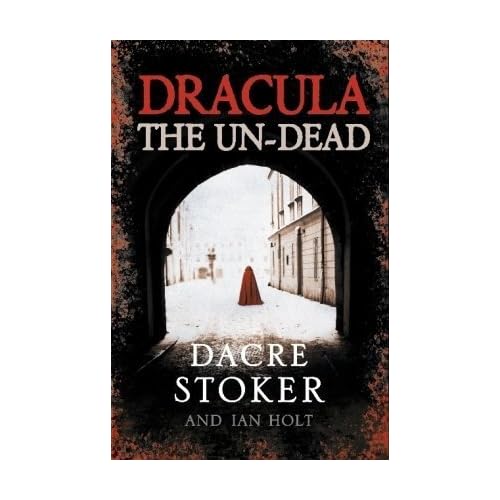 Jean Marigny
Jean Marigny, probably best known for the excellent little book known in English as
Vampires: The World of the Undead (Thames and Hudson, 1994), has recently published a new book on vampires titled
La fascination des vampires (Klincksieck, € 16.00).
It apparently is fashioned on answering 50 elementary - or perhaps not so elementary? - questions about vampires:
Introduction1. Pourquoi les vampires sont-ils omniprésents dans la littérature et le cinéma contemporains ?
Les vampires dans la tradition légendaire 2. Qu'est-ce qu'un vampire ?
3. Y a-t-il un terme unique pour désigner les vampires ?
4. Quels sont les différents sens donnés au mot vampire ?
5. À quelle époque les vampires ont-ils fait leur apparition ?
6. A-t-on cru à des êtres suceurs de sang avant le XVIIe siècle ?
7. Existe-t-il un rapport quelconque entre les légendes concernant les vampires et l’Histoire ?
8. Pourquoi les pays d’Europe centrale et orientale ont-ils été plus affectés par le vampirisme que les pays d’Europe occidentale ?
9. Comment reconnaît-on un vampire ?
10. Comment devient-on vampire dans la tradition légendaire européenne ?
11. Quels sont les moyens de lutter contre les vampires ?
12. La croyance aux vampires se limite-t-elle à l’Europe ?
13. Croit-on encore aux vampires aujourd’hui ?
14. Pourquoi le vampire fascine-t-il toujours dans un monde devenu rationaliste ?
15. Existe-t-il aujourd’hui un ésotérisme lié au vampirisme ?
Les vampires dans la littérature 16. Quand les vampires ont-ils fait leur apparition dans la littérature narrative ?
17. Comment le vampire est-il représenté dans la littérature ?
18. Le personnage du vampire a-t-il inspiré les poètes ?
19. Y a-t-il eu un théâtre des vampires ?
20. Pourquoi la publication de Dracula a-t-elle marqué un tournant dans l’histoire du vampire en littérature ?
21. Quels sont les rapports possibles entre la littérature vampirique et l’Histoire ?
22. Dans quels pays d’Europe le vampire littéraire a-t-il eu le plus de succès ?
23. Pourquoi les vampires ont-ils un tel succès aux États-Unis ?
24. Y a-t-il des vampires dans la science-fiction et la fantasy ?
25. Dans quels autres genres littéraires rencontre-t-on des vampires ?
26. Le vampire est-il toujours pris au sérieux dans la littérature ?
27. Comment raconte-t-on les histoires de vampires ?
28. Pourquoi le vampire fascine-t-il aujourd’hui de très jeunes lecteurs ?
29. Peut-on établir un palmarès des histoires de vampires ?
30. Le thème du vampire est-il destiné à perdurer en littérature ?
Les vampires au cinéma et dans les arts 31. Quand et comment le vampire a-t-il fait son apparition au cinéma ?
32. Quels sont les différents visages de Dracula au cinéma ?
33. Quels sont les rapports entre la littérature vampiresque et le cinéma ?
34. La télévision a-t-elle une spécificité par rapport aux films de vampires ?
35. Les films de vampires sont-ils fidèles aux romans et nouvelles dont ils sont adaptés ?
36. Quels sont les films de vampires les plus réussis ?
37. Comment le cinéma utilise-t-il le personnage du vampire ?
38. Le vampire a-t-il eu toujours le même impact au cinéma ?
39. En dehors du cinéma, quels arts le vampire a-t-il inspirés ?
40. Y a-t-il des vampires dans la bande dessinée ?
Le mythe moderne du vampire 41. Le vampire peut-il avoir une signification sociopolitique ?
42. Le vampire a-t-il une dimension religieuse ?
43. Le vampire est-il nécessairement l’incarnation du mal ?
44. L’attrait qu'exercent les vampires peut-il avoir une influence quelconque sur le comportement de certaines personnes ?
45. Le vampire représente-t-il nécessairement l’altérité absolue ?
46. En quoi le thème du vampirisme est-il érotique ?
47. Comment la mort est-elle perçue dans les histoires de vampires ?
48. Comment la psychanalyse voit-elle les vampires ?
49. Quel a été l’apport des jeux de rôle dans le mythe moderne du vampire ?
Conclusion50. Comment peut-on en finir avec les vampires ?
Bibliographie
Bibliographie critique
Filmographie sélective
A review in French is available
here.






















































